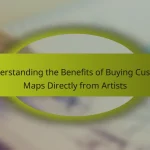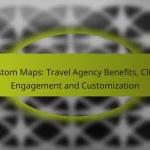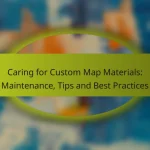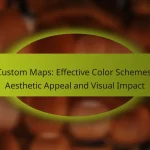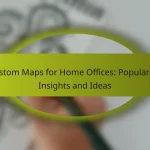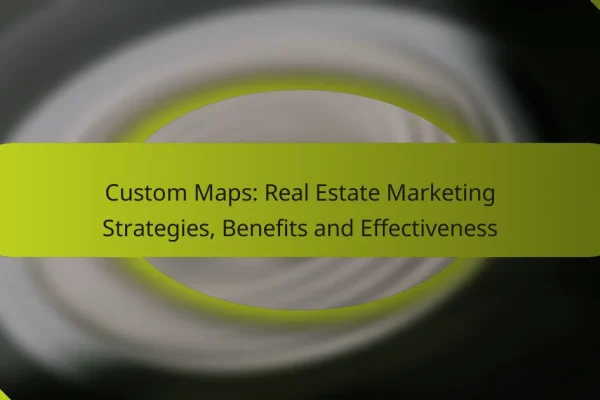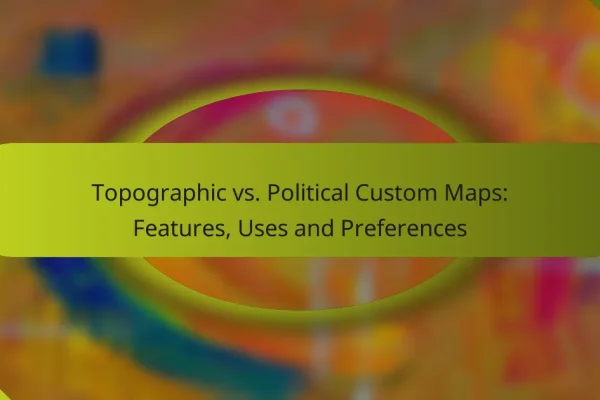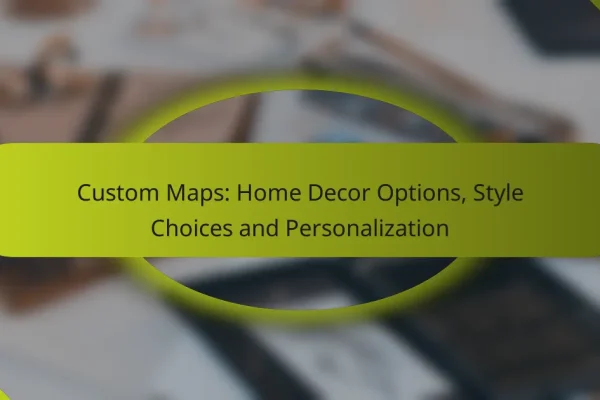What are the types of custom maps available?
Custom maps come in various types, each serving different purposes and audiences. Understanding these types can help you choose the right map for your needs, whether for navigation, education, or tourism.
Topographic maps
Topographic maps display the terrain of an area, highlighting elevation changes, landforms, and natural features. They use contour lines to represent elevation and can include details like rivers, forests, and trails.
These maps are particularly useful for outdoor activities such as hiking, camping, and land surveying. When using a topographic map, pay attention to the contour intervals to understand the steepness of the terrain.
Political maps
Political maps illustrate boundaries between countries, states, and regions, often highlighting major cities and capitals. They focus on human-made features rather than physical geography.
These maps are essential for understanding geopolitical relationships and can be useful in educational settings. When selecting a political map, consider the level of detail you need, such as whether you require state borders or just country outlines.
Road maps
Road maps provide detailed information about highways, roads, and routes, making them ideal for navigation. They often include points of interest, such as gas stations, restaurants, and landmarks.
When using a road map, familiarize yourself with the map legend to understand symbols and road types. For long-distance travel, consider using a combination of road maps and GPS for the best results.
Tourist maps
Tourist maps are designed to help visitors navigate cities or attractions, highlighting points of interest, accommodations, and transportation options. They often include information on local attractions, dining, and cultural sites.
When choosing a tourist map, look for one that includes public transport routes and walking paths to enhance your experience. Many tourist maps are available in both print and digital formats for convenience.
Interactive digital maps
Interactive digital maps allow users to zoom in and out, search for locations, and access real-time data. These maps can be accessed on various devices, making them versatile for different uses.
When using interactive digital maps, ensure you have a reliable internet connection for the best experience. Be aware of privacy settings and data usage, especially if using mobile data while traveling.
How can custom maps enhance travel experiences?
Custom maps can significantly enhance travel experiences by providing tailored information that meets individual preferences. They allow travelers to explore destinations in a more meaningful way, ensuring that they discover unique attractions and navigate efficiently.
Personalized itineraries
Custom maps enable travelers to create personalized itineraries that reflect their interests and schedules. By selecting specific points of interest, such as museums, restaurants, or parks, users can design a route that maximizes their time and enjoyment. For instance, a food lover might focus on local eateries, while an art enthusiast could prioritize galleries and exhibitions.
When crafting a personalized itinerary, consider the time you have available and the distances between locations. Aim for a balance between must-see attractions and hidden gems to enrich your travel experience.
Local insights and attractions
Custom maps often include local insights that highlight attractions not typically found in standard travel guides. This can include recommendations for lesser-known sites, cultural events, or unique experiences that provide a deeper understanding of the area. For example, a custom map for Paris might feature local markets or street art tours that tourists might overlook.
Utilizing local insights can enhance your trip by connecting you with the culture and community. Look for maps that incorporate reviews or tips from residents to ensure you’re getting authentic recommendations.
Navigation assistance
Custom maps provide essential navigation assistance, making it easier to find your way around unfamiliar areas. They can offer real-time directions, help identify public transport options, or suggest the best walking routes. This is particularly useful in cities where public transportation can be complex or when exploring rural areas with limited signage.
To make the most of navigation features, ensure your custom map is accessible offline, especially in areas with poor mobile service. Additionally, familiarize yourself with the map’s interface before your trip to avoid confusion while navigating.
What are the benefits of using custom maps for businesses?
Custom maps offer businesses a unique way to enhance their visibility and connect with customers. They can improve branding, enable targeted marketing, and foster customer engagement, making them a valuable tool for various industries.
Branding opportunities
Custom maps can serve as a powerful branding tool by incorporating a company’s logo, colors, and design elements. This visual representation helps create a memorable impression and reinforces brand identity. For example, a restaurant could use a map to highlight its location alongside nearby attractions, enhancing its visibility.
Additionally, businesses can use custom maps to showcase their service areas or product availability, which can help differentiate them from competitors. A clear and attractive map can communicate professionalism and attention to detail, further strengthening brand perception.
Targeted marketing
Custom maps allow businesses to target specific demographics by highlighting locations relevant to their audience. For instance, a real estate agency can create maps that showcase properties in desirable neighborhoods, tailored to potential buyers’ preferences. This targeted approach can lead to higher engagement and conversion rates.
Furthermore, businesses can analyze geographic data to identify trends and customer behaviors. By understanding where their customers are located, they can adjust marketing strategies and promotions to better meet the needs of their target market.
Customer engagement
Engaging customers through custom maps can enhance their experience and encourage interaction. For example, a tourism company might create a map that outlines local attractions, restaurants, and events, providing visitors with a comprehensive guide to the area. This not only informs but also invites exploration.
Moreover, businesses can incorporate interactive features into their maps, such as clickable points of interest or links to additional resources. This interactivity can keep customers engaged longer and encourage them to share their experiences, further promoting the business through word-of-mouth and social media.
What factors should you consider when choosing a custom map?
When choosing a custom map, consider the map’s purpose, target audience, design elements, and how it will be distributed. These factors will guide your decisions to ensure the map effectively meets your needs and resonates with users.
Purpose and audience
Understanding the purpose of your custom map is crucial. Whether it’s for educational use, marketing, or navigation, the map’s function will dictate its design and content. Additionally, consider your audience’s preferences and familiarity with maps, as this will influence how you present information.
For instance, a map aimed at tourists should highlight attractions and amenities, while a map for urban planners might focus on zoning and infrastructure. Tailoring the map to its intended users enhances its effectiveness and engagement.
Design and aesthetics
The design and aesthetics of your custom map play a significant role in its usability and appeal. Choose colors, fonts, and symbols that align with the map’s purpose and audience. A visually appealing map can attract attention and make information easier to digest.
Consider using a clean layout with clear labels and intuitive navigation. For example, a minimalist design may work well for a digital map, while a detailed, artistic style could be more suitable for printed versions. Ensure that the design enhances rather than distracts from the map’s information.
Format and distribution
The format of your custom map affects how it will be used and shared. Digital maps can be interactive and easily updated, while printed maps may require careful consideration of size and material. Decide whether the map will be used online, in print, or both, as this will influence design choices.
When distributing your map, consider the platforms and methods that will reach your audience effectively. For instance, sharing a digital map via social media can enhance visibility, while printed maps may be distributed at events or locations relevant to your audience. Ensure that the chosen format aligns with your distribution strategy for maximum impact.
What are the costs associated with creating custom maps?
The costs of creating custom maps can vary widely based on factors such as complexity, data sources, and the technology used. Generally, expenses can range from a few hundred to several thousand dollars, depending on the project’s specific requirements.
Design and Development Costs
Design and development costs are often the largest portion of the budget for custom maps. This includes hiring skilled cartographers, graphic designers, and developers who can create interactive features. Depending on the expertise required, hourly rates can range from $50 to over $150.
Data Acquisition Expenses
Data acquisition expenses can significantly impact the overall cost of custom maps. If proprietary data is needed, licensing fees can add hundreds to thousands of dollars. Open-source data may be available at no cost, but it might require additional processing to meet specific needs.
Maintenance and Updates
Maintenance and updates are ongoing costs that should be factored into the budget. Regular updates may be necessary to keep the map relevant, especially if it includes dynamic data. Setting aside a budget of 10-20% of the initial development cost annually for maintenance is a common practice.
Hosting and Technology Fees
Hosting and technology fees can also contribute to the overall expenses of custom maps. Depending on the platform used, hosting services can range from $10 to several hundred dollars per month. Additionally, subscription fees for mapping software or APIs may apply, which can add to the long-term costs.

